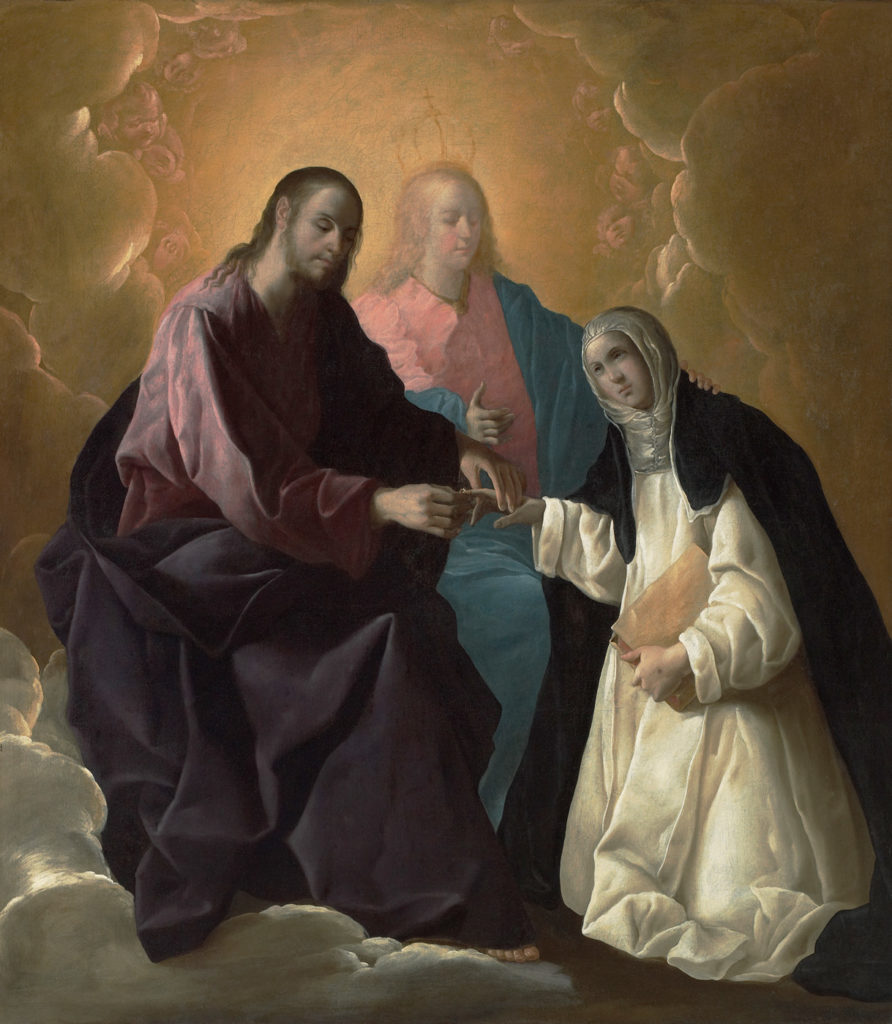 Today is 30 April and in the traditional calendar it is the Feast of St. Catherine of Siena, Doctrix of the Church. In the Novus Ordo her feast falls on 29 April (her dies natalis). She was canonized by a favorite of mine, Pius II, in 1461.
Today is 30 April and in the traditional calendar it is the Feast of St. Catherine of Siena, Doctrix of the Church. In the Novus Ordo her feast falls on 29 April (her dies natalis). She was canonized by a favorite of mine, Pius II, in 1461.
Her feast started out on 29 April, her death date, but because that conflicted with the feast of St. Peter Martyr (of Verona), and since he was a really hot saint at the time, Catherine’s celebration was moved to the 30th. However, since the veneration of saints with time will ebb and flow, and as interest in St. Peter Martyr waned, in 1969 Catherine resumed her feast on her birth date into heaven, 29 April.
Because St. Catherine is Patroness of Italy, in the Vetus Ordo today her Feast bumped the 3rd Sunday after Easter. Vespers this evening wound up being complicated because, in addition to singing Vespers of a Virgin Not A Martyr, we had a commemoration of the Sunday and we anticipated tomorrow, which is the Feast of St. Joseph. Busy.
Catherine is a distinguished saint, a Third Order Dominican, showered with honors and with marks of confidence by the Church. For example, Bl. Pius IX made Catherine of Siena co-patroness of Rome, along with Sts. Peter and Paul and St. Philip Neri. Ven. Pius XII made her patroness of Italy along with St. Francis of Assisi. St. John Paul II named her Patroness of Europe together with with St. Teresa Benedicta of the Cross (Edith Stein) and St. Bridget of Sweden. Most of all, in 1970 Paul VI named her Doctrix of the Church.
Among her accomplishments in life was the prompting of Pope Gregory XI (de Beaufort) to leave Avignon and to return to Rome.
Her biographer says that when she was a child she had visions of Christ and she vowed her life to God. At 21 she experienced what was called a “mystical marriage” with the Lord, which is a common way of depicting her in art. She also received the stigmata. She travelled widely in her time and was enormously influential. Catherine wrote extensively to authorities.
Eventually in Rome, she would die at 33 years of age. The chapel where she died is close to where I am as I write this.

Her written The Dialogue of Divine Providence, dialogues with God, was probably dictated in a state of ecstasy, not unlike the writings of the truly amazing St. Veronica Giuliani.
I posted something from St. Catherine’s Dialogue 124, God describing how even though demons incite the sin of same-sex acts, those acts so offend the angelic intellects of the demons that they won’t remain present while they are being committed. If you don’t like that take your case up with God. He will take it up with you, count on it. That said, if you repent sincerely and GO TO CONFESSION with a firm purpose of amendment, forgiveness is always readily and joyfully given. There is no sin – NO sin- that we can commit that is so great that God will not forgive it… provided that we ask.
Meanwhile, check out what I posted before.


































the prompting of Pope Gregory XI
That’s one way of putting it. The letter she wrote to him told him to stop being a coward and to return to Rome.
That’s it? She rebuked the Pope because he wasn’t living in Rome? Compared to what is going on today in Rome I’d say that borders on the completely inconsequential.
It’s not a matter of “that’s it.” This was during the Avignon Papacy. The Papacy had been reduced to little more than a puppet of the French throne during that time, and the Papal States had fallen into squalor, both spiritual and physical. It took her multiple letters beseeching Gregory XI to return to Rome and to reform the clergy and to rebuild the Papal States. She ultimately succeeded when she went to Avignon as an ambassador from Florence on unrelated business. After their face-to-face meeting, Gregory XI returned to Rome less than a year.
She worked tirelessly in northern Italy for the reform of the clergy, which had grown quite worldly at the time, and to end the ceaseless wars between the various Italian republics. She used her influence to prevent the Germans from expanding their political base in Italy and further destabilizing the region.
The institutional Church is in rough shape these days, but that’s no reason to dismiss St. Catherine or her worldly accomplishments that brought much glory to God.